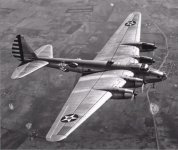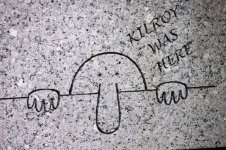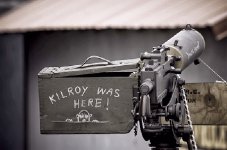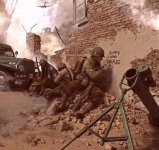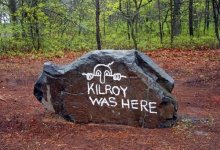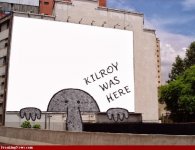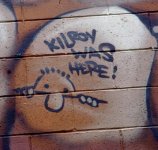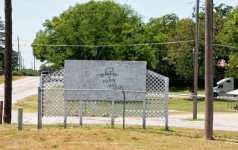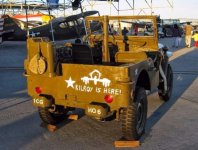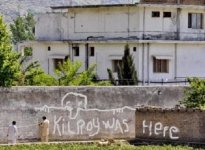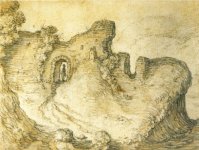PrairieSpyder
New member
Older folks remember him well, had even been party to inscribing on our school desks, books, just anywhere at all.
KILROY WAS HERE !
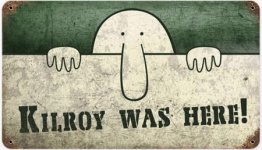
He is engraved in stone in the National War Memorial in Washington, DC, back in a small alcove where very few people have seen it. For the WWII generation, this will bring back memories. For you younger folks, it's a bit of trivia that is a part of our American history. Anyone born in 1913 to about 1950, is familiar with Kilroy. No one knew why he was so well known- but everybody seemed to get into it.
So who was Kilroy?
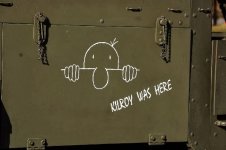
In 1946 the American Transit Association, through its radio program, "Speak to America ," sponsored a nationwide contest to find the real Kilroy, offering a prize of a real trolley car to the person who could prove himself to be the genuine article.
Almost 40 men stepped forward to make that claim, But only James Kilroy from Halifax , Massachusetts , had evidence of his identity.

'Kilroy' was a 46-year old shipyard worker during the war who worked as a checker at the Fore River Shipyard in Quincy . His job was to go around and check on the number of rivets completed. Riveters were on piecework and got paid by the rivet. He would count a block of rivets and put a check mark in semi-waxed lumber chalk, so the rivets wouldn't be counted twice.
When Kilroy went off duty, the riveters would erase the mark. Later on, an off-shift inspector would come through and count the rivets a second time, resulting in double pay for the riveters.
(Continued in the next post, so I can include more pics)

